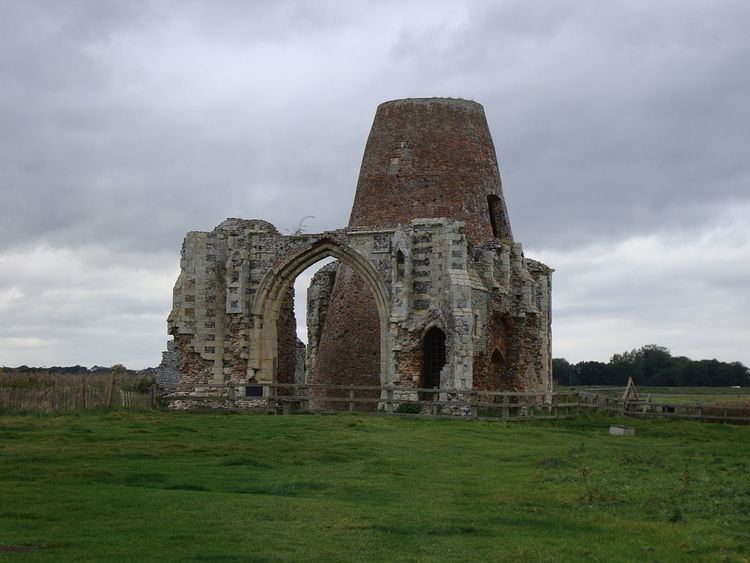 | ||
Address Yare House 62-64 Thorpe Road Norwich, Norfolk NR1 1RY, United Kingdom Similar How Hill, The Broads, Barton Broad, Ranworth Broad, Brograve Mill | ||
St Benet's Abbey is a ruined abbey of the Order of Saint Benedict situated on the River Bure within The Broads in Norfolk England. It is also known as St Benet's at Holme or Hulme. St Benet is another name for Benedict Biscop, the 7th-century Northumbrian famous for his founding of Monkwearmouth-Jarrow.
Contents
St benet s abbey norfolk broads dji inspire drone
Background
St Benet's, according to abbey tradition, was founded on the site of a ninth-century monastery where the hermit Suneman was martyred by the Danes. About the end of the tenth century it was rebuilt by one Wulfric. A generation later, c. 1022, its estates of Horning, Ludham and Neatishead were confirmed by King Canute. Other early benefactors included Edith Swannesha, concubine to Harold II, and Earl Ralf II of East Anglia. In 1065 the abbey established a cell at Rumburgh Priory in Suffolk.
At the time of the Norman Conquest Harold Godwinson put the abbot of St Benet's, Aelfwold, in charge of defending the coast against invasion. After the Conquest, Aelfwold fled to Denmark, and the abbey's estates suffered encroachments by neighbouring landowners. The site was enclosed by a wall with battlements in 1327.
Sir John Fastolf, the inspiration for Shakespeare's Falstaff, was buried here in December 1459, next to his wife Millicent in a new aisle built by Fastolf on the South side of the abbey church.
It has been claimed that St Benet's is the only religious house not closed down by Henry VIII during the Dissolution of the Monasteries. Instead he united the Abbacy with the bishopric of Norwich and therefore that the Bishops of Norwich have remained abbots of St Benet's to this day. The Bishop of Norwich, as Abbot, arrives once a year, standing in the bow of a wherry and preaches at the annual service on the first Sunday of August. However, since the grant of the abbacy to the Bishop was on the basis of his maintaining a community of twelve monks under a prior and by 1540 no such community existed the abbey therefore having become extinct, the claim is spurious.
After the Dissolution the majority of the buildings at the site were demolished, with the exclusion of the gatehouse, which is now a grade I listed building. In the second half of the eighteenth century, a farmer built a windmill, later converted to a windpump, inside the abbey gatehouse, removing the second floor of the gatehouse in the process. The windmill, which ceased operating approximately a century later and is itself now a ruin, is a grade II* listed building. On 2 August 1987 a cross made from oak from the Royal Estate at Sandringham was erected on the High Altar.
Abbots
The years listed are election dates
